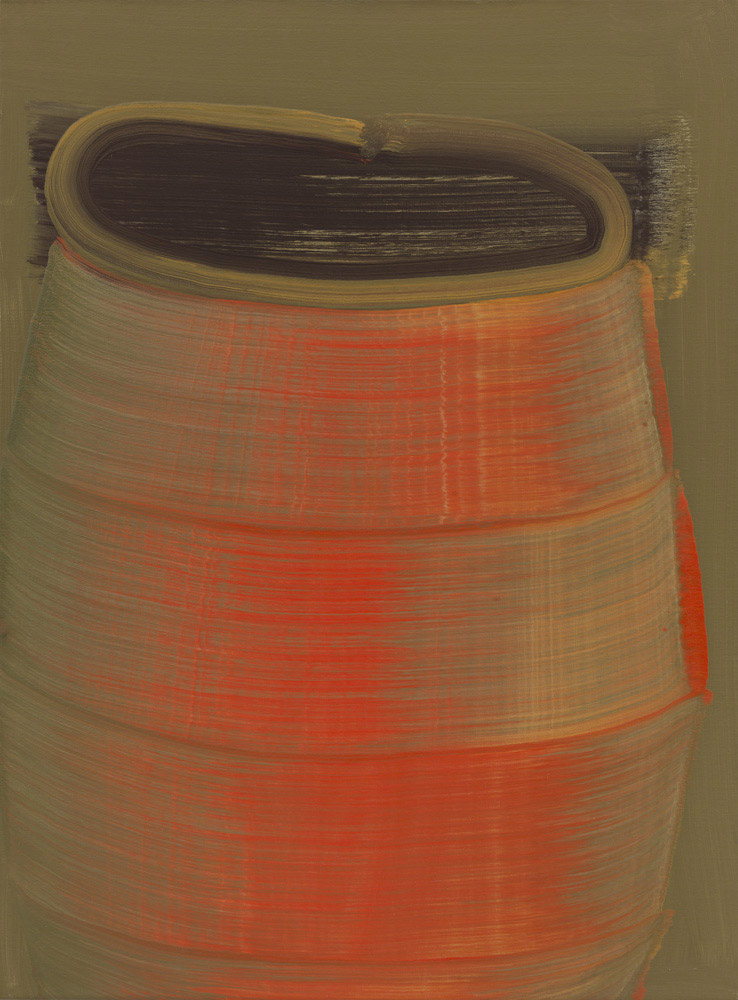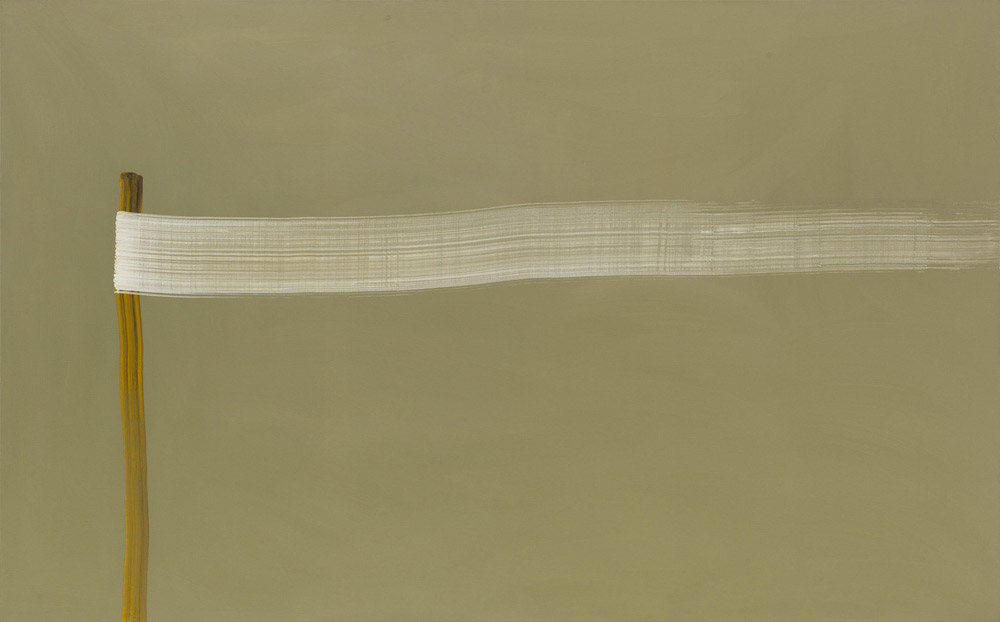
A memoir of the South Korean artist written by her husband tells the story of her emigration to Germany and how she navigated traditions of the East and West
While it masquerades as something between a monograph and a biography, Where at Home is ultimately uncategorisable. It’s also partly an art-theory text (covering everyone from Goethe and Kant, Adorno and Agamben, to Qing-dynasty landscape painter Shitao and contemporary China’s Ai Weiwei, and to poets such as Kim Chi-ha and Aimé Césaire, with a heavy dose of Gregory Bateson sprinkled over the top), part environmentalist screed, part manifesto for nonhuman rights and partly an attack on the information age (and David Hockney’s iPad). And then, underneath all that, it’s a text written by a husband about his wife.
The wife in question is German-Korean painter Song Hyun-Sook. Her husband is the German sculptor Jochen Hiltmann. You could also call this a love letter of sorts, although the book is rather more academically subtitled ‘an account of the life and work of the painter Song Hyun-Sook and the cultural background of her emigration’. The ‘life’ mainly accounts for Song’s rural upbringing among the paddy fields and silkworm farming of Muwol-li, in North Gyeongsang, Korea, her emigration to West Germany in 1972, aged twenty, to work as one
of the approximately 10,000 ‘Korean angel’ nurses who arrived in the country during the 1960s and 70s, and her subsequent training and work as an artist. It begins with their first encounter, in 1973, on a train from Bonn to Hamburg, when Hiltmann initially mistook Song for a boy, and then a monk, was fascinated by her packed lunch and her handling of chopsticks, before, when the truth about her sex was eventually revealed, Hiltmann pronounced that she was ‘strangely beautiful but she wasn’t a beauty’.

Hiltmann attempts to be broadly analytic in his narrative. His record of their first encounter appears more an attempt to recognise his own (and West Germany’s) cultural naiveté (instances of straight-up racism are largely absent here, although Hiltmann does recall how the chief nurse on Song’s ward simply called her new charge Maria, after the nurse she replaced). In the chapters that follow he is fastidious in his description of the environment of Muwol-li during the period of Song’s childhood, from the storage pots, tools and furniture in houses, to the cultivation and irrigation of the hillside rice fields. The general impression is of people working together, with their families, their local communities and to the rhythm and demands of nature itself. And yet the description of Song’s upbringing, told from the perspective of an all-knowing narrator (explaining local customs and Korean vocabulary), with interfamilial conversations (which presumably were related to Hiltmann by Song sometime after the fact) occasionally in speech marks, and an intimate knowledge of Song’s infancy, gives the section something of the feel of fiction. And of someone compensating for their ignorance at that first encounter. Which is one way of expressing love.

Courtesy Zeno X, Antwerp
But this lengthy account of Song’s childhood also serves a different function. After studying art at the University of Fine Arts Hamburg between 1976 and 1981, Song returned to South Korea in 1984 to spend a year studying Korean art history at Chonnam National University in Gwangju. While this may appear to have been a means of reconnecting with her roots, Hiltmann describes a subsequent return to Muwol-li as something of a shock. Two years after Song had left the town, electricity arrived. By the time she returned, the tools that Hiltmann so lovingly describes in the opening chapter are lying, redundant, outside the house. Electric water pumps now irrigate the fields, and stone shrines and markers have disappeared. Along with many of the town’s younger generation, who, no longer required to labour in the rice fields, have gone to the city in search of work. Everything that had a clear purpose and place in life has been displaced. In a sense then, Song, an immigrant in her new adopted country, was now equally an alien in the place of her birth. ‘Asked “Where were you born?”’ Hiltmann writes, ‘Song Hyun-Sook replies ‘“In the year of the hare.’”

Courtesy Zeno X, Antwerp
What follows, in the second half of the book, is a series of diatribes about the ruptures caused by the advent of modernism (which for Hiltmann, in terms of art, is a reaction against industrialisation as much as it is against nineteenth-century academicism), and its effects on traditional worldviews, notions of community and the relations between the human and the natural world. There are comparative studies of philosophies of the East and the West, of art traditions in the East and the West (trees planted in Honam with ingrown rock markers, dangsan-namu, are juxtaposed with an oak and basalt marker planted by Joseph Beuys in 1982 as part of his 7000 Oak Trees project for Documenta in Kassel) and of the disruptions to both caused by capitalism, industrialism and the impact of the information age. ‘More and more people are calling for a change in a culture whose main value is marketability,’ Hiltmann howls. There are moments too when Hiltmann’s desire to describe his wife’s position between East and West seems to go a little too far, as when he writes of Song’s contracting tuberculosis, shortly after arriving in Germany, as being like a ‘shamanic journey’. And throughout, it remains somewhat unclear whether these are Hiltmann’s own ideas or a transposition of Song’s thoughts.
Eventually we get to know Song’s art. Her use of egg-tempera techniques (learned through her training in the West) and a philosophy and mode of working that connects closely to calligraphic traditions from the East. The way in which she titles a number of her works after the number of brushstrokes used to make them (the number of strokes is generally minimal and Song often refers to her paintings as haikus). ‘In East Asia the one brushstroke was all of life,’ Hiltmann proclaims.

Courtesy Zeno X, Antwerp
But amid what is an intriguing attempt to account for the mixed influences on Song’s art and the ways in which one culture can understand another, other aspects of her life fade into the background. Her political positions in relation to South Korea’s oppressive military dictatorships, for example, or the effect on her of the Gwangju Uprising. We learn that she dreams about travelling by train from South to North Korea to make a pilgrimage to Geumgangsan Mountain, but we don’t learn a lot about her position on Korean unification. We learn that exiled dissident artists in Germany were kidnapped, tortured and imprisoned by the South Korean CIA, but we don’t really learn how this affected Song, who, with her husband, was in contact with and supported many of them. That Song is attuned to politics and their effects on the lives of ordinary people we do learn in passing, and that it impacts on her work and position. But for the main part this remains a subcurrent to the flow of navigating East and West and articulating a position that is somewhere in between. A portrait of a marriage in that sense, but one that demands a volume two to come.
Where at Home: Paint or Die by Jochen Hiltmann, published by Zeno X Gallery / König Books